LOFOTEN ISLANDS
Last night Ole and I rented a little red fisherman’s hut –a “Rorbu”— for the night. Food and lodging is wildly expensive in Norway, but if you have your own bedding (we brought sheets and comforters from his uncle’s house) and bring a cooler of food, these little red cabins are perfect camping spots. Tired after a day of driving, we napped from 4 till about 6 p.m. The sun slanted over these impossibly shaped islands and washed us in a kind of reverie.
After we got up, we snacked – lox and cod roe on bread – drank a Nordland pilsner, then went exploring. Instead of thinking “Oh, we’d better hurry to see things before it gets dark!” we expanded into the evening. As if there were no tomorrow. Because there IS no tomorrow here: In mid-June above the Arctic Circle the sun never sets.
At first I couldn’t wrap my mind around this business of no night. (Do you shut the curtains?), and in the past when I’ve asked Ole about this aspect of his Norwegian childhood, he’d always get this dreamy look in his eye and say, “No, it isn’t uncomfortable at all. It’s wonderful, actually. I remember sheep bells out my open window and the pleasant feeling that the light was with me even though I was a kid in bed.” I didn’t know what to do with this day that stretched on and on. I was restless and couldn’t really settle into “going to bed.”
But now, after about a week, my body is finding its rhythm. There seems to be more time, more space. “After dinner” no longer means reading a bit, downloading pictures to Facebook, and turning in. Dinner itself is sort of a sideline and “evening” now means that we leave our cabin at 9 and venture off into something new.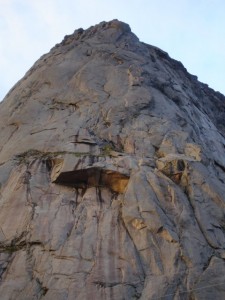
Last night we went to Henningsvær to explore the racks of drying cod against a spectacular sky, mountains jutting up from the sea. We wandered through the little village – wind whistling through the hundreds of cod tails drying on the racks. We met a local cat who promptly peed on the bumper of our rented car. Though all the shops were closed, kids on skateboards laughed and scooted down the street. A couple sipped a glass of wine on the deck of their boat. We walked along a cove trail and heard voices coming from somewhere we couldn’t see. We craned our necks. The non-setting sun shimmered, translucent across the water –just barely touching the pokey tips of the faraway peaks. Sure enough –nearly vertically above us on the face of the sheer rock— three climbers hugged the cliff, one being belayed from above. All this happening at midnight!
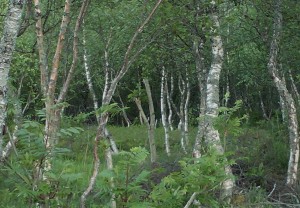 I can’t help but think what it’s like up here in December. I’ve been to Norway in the winter, but only in the South where the sun does rise. The winter has its own appeal – candles and cozy hearths and stars reflecting against the snow—but there is a dark mystery to this northern land that even the summer midnight sun cannot shake. Maybe that’s why the Vikings and the Sami (Laplander) cultures were rife with spirits, gods, fairies and trolls. Even in June bloom, it’s not hard to picture a troll or two among the squiggly birch trees in the muskeg or Thor cracking his hammer over this archipelago that spills into the querulous North Sea.
I can’t help but think what it’s like up here in December. I’ve been to Norway in the winter, but only in the South where the sun does rise. The winter has its own appeal – candles and cozy hearths and stars reflecting against the snow—but there is a dark mystery to this northern land that even the summer midnight sun cannot shake. Maybe that’s why the Vikings and the Sami (Laplander) cultures were rife with spirits, gods, fairies and trolls. Even in June bloom, it’s not hard to picture a troll or two among the squiggly birch trees in the muskeg or Thor cracking his hammer over this archipelago that spills into the querulous North Sea. 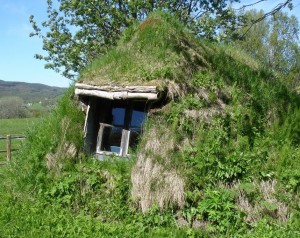
On our drive out here to the islands, Ole and I stopped at a strange little Sami Museum – tucked up in the hills. We had to hike up a trail to find the old homestead where a Laplander had lived in the 1800’s. The 20-something Sami who escorted us around the place told me about the ghosts he’d heard in the house and how the whole deserted farm– a sweeping meadow and a view of mountains in the distance – was filled with Spirit. There was even a sign that said one must always respect the trolls and faeries who live under that rock. “Keep on their right side” the sign said, and in return they will care for the animals “and make sure all goes well on the farm.” 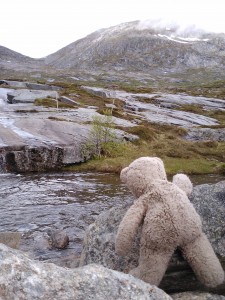
And today at Borg where the Scandinavian archeologists have rebuilt the huge hall of the Viking Kings of 1000 years ago, we learned that the Vikings themselves had a tumultuous but intimate relationship with the gods. Oden and others were responsible for both the darkness and the light. It was believed that the human race itself was spawned by a union between the gods and men. And, according to the self-guided tour, the world of people was only held together by the circle of the serpent. And there was a catch to that, too: The serpent was eating its own tail. Chaos was always just around the corner. (Ain’t that the truth!)
The Viking chieftains were said to have supernatural powers, too, and the natural world was as alive and vocal as any human, both benign and frightening. Living on the edge of the island – the vast Atlantic ocean just out the fjord – they held the knowledge in June that a different kind of light would envelop their world soon enough: candlelight and the moon reflecting off the snow. Maybe next time we come here I’ll see the beauty of the dark time, too, the stars like sparks from Thor’s fire and the Northern Lights shimmering in place of the sun.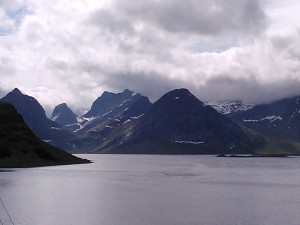

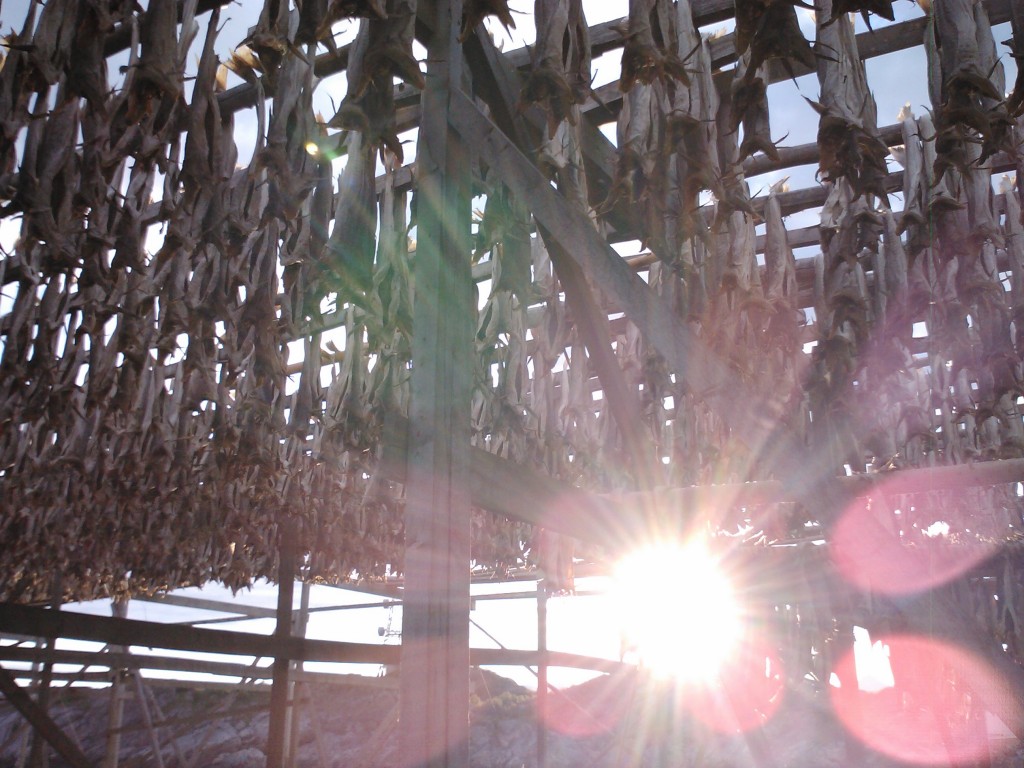
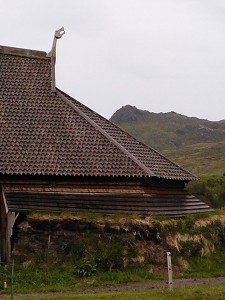
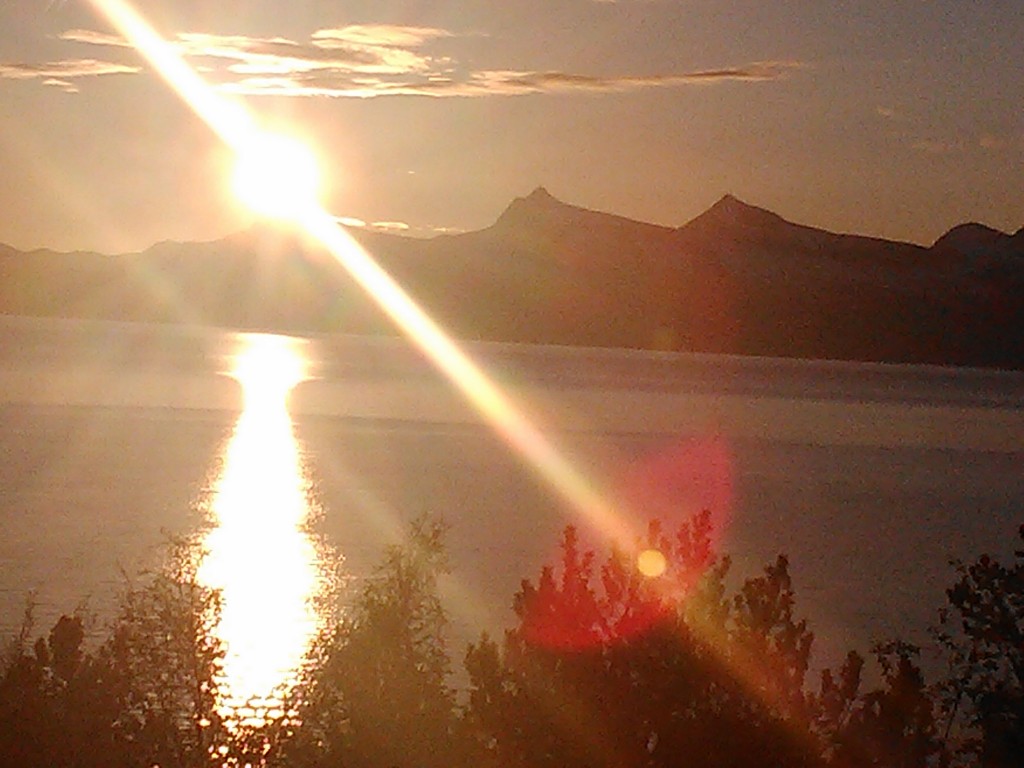
1 response to Midnight Sun: Thoughts on Unending Light